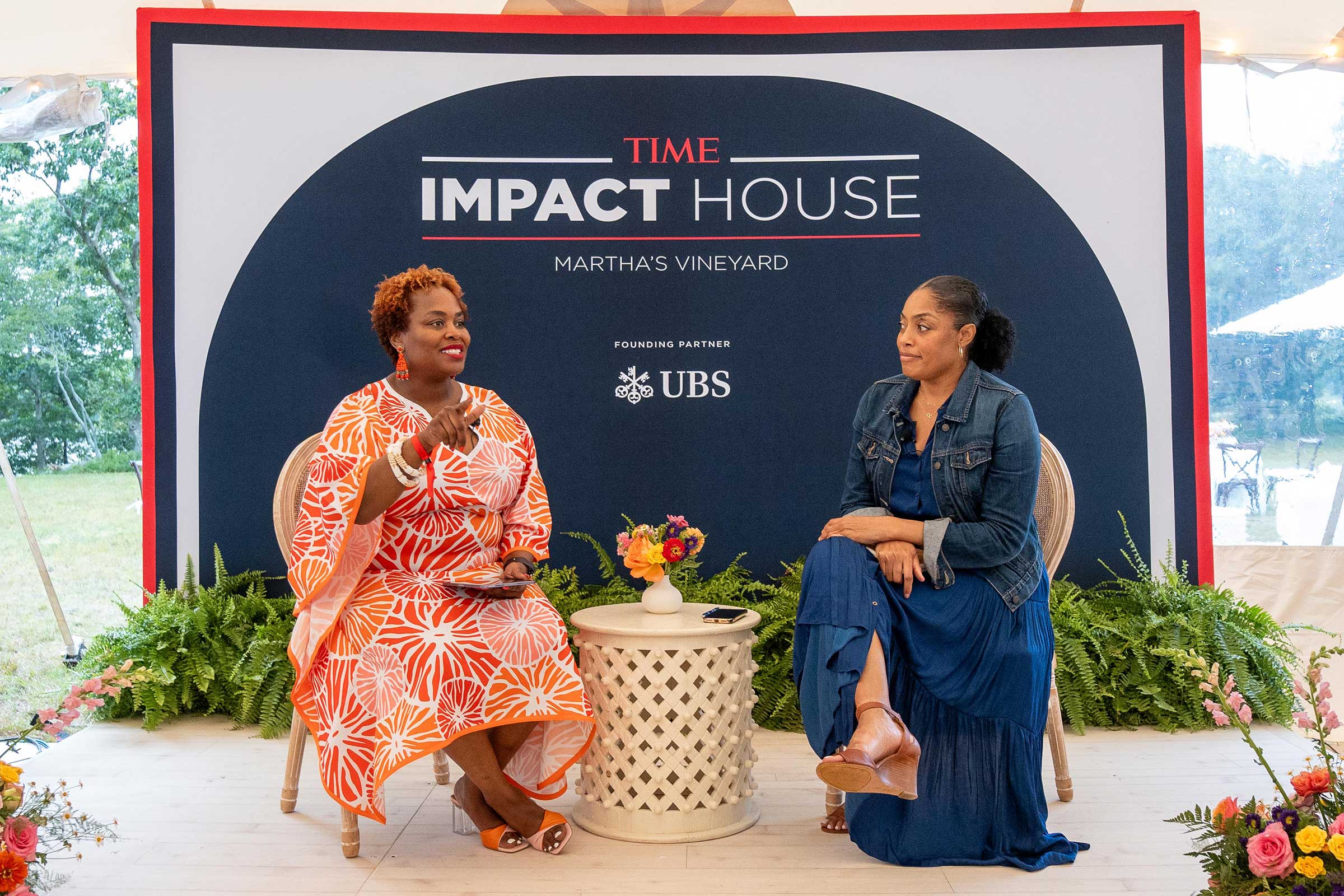
When it comes to funding new and innovative ideas, Black women are routinely overlooked. It’s an experience Tulaine Montgomery, CEO of American venture philanthropy organization New Profit, sees regularly and is working to put an end to. “All the stories about scarcity when it comes to racially and ethnically diverse leadership and entrepreneurship—it’s a myth,” she told TIME Senior Correspondent Janell Ross during a TIME100 Talk at the first-ever TIME Impact House in Martha’s Vineyard on Monday. “These resources and these ideas are abundant.”
[time-brightcove not-tgx=”true”]Montgomery was a member of the core team that helped launch New Profit in 1998. During her time at the organization, she has led initiatives focused on strengthening educational pathways and employment opportunities for underserved youth, channeling resources and support to entrepreneurs impacted by the criminal justice system, and building a more diverse, equitable, and inclusive philanthropic sector. New Profit backs social entrepreneurship in support of advancing equity and opportunity, but it should not be confused with charity, emphasizes Montgomery.
“Charity perhaps has its place in a spiritual context, but when I’m talking about impact and systems change, I have no interest in charity,” Montgomery shared. “The history of charity is that it has its origins in the sort of manifest destiny ethos,” she said. “That idea that there are some people who are ordained by God to help those who are less fortunate, which by definition implies a sort of hierarchy of capability. It means that the solutions could not possibly reside in the people who are in some way receiving the charity.”
Ultimately, when you invest in someone—as opposed to donating to them—it becomes a partnership, says Montgomery. “We are peers who both have something of equal value to offer to the creation of the solution to the scaling of the business.”
But at the moment, Montgomery says, there’s a trust deficit between those with the resources to give and those in need. She referenced the public outcry following the death of George Floyd in 2020, when corporations pledged billions to advance racial equity. But only a fraction of those funds were paid, she pointed out.
Too many people don’t see the true value of investing in diverse communities. “Right after the death of George Floyd,” Montgomery said, “I would be in conversations with well-intended people with economic wealth, who will say, ‘It’s really great that New Profit is investing in a broader range of entrepreneurs. That’s great. And I love that. Are you going to sustain the same level of quality and vigor?’” It was a question that suggested doubt in the long-term success of such commitments, often perceived as admirable risks or write-offs rather than necessary investments.
“We can’t afford to pretend it’s an optional thing. Nor can we afford to, in my opinion, pretend that coalition-building, what some would call ‘diversity work’ is nice to have. We have the benefit of living in a moment where the right thing to do is also the smart thing to do.” Especially as U.S. demographics shift, she says, only those who “know how to build effective and sustainable coalitions are going to have the adaptive capability to thrive.”
“The truth is,” Montgomery said, “that the most high-impact, innovative, economically efficient, and sustainable solutions and business models are coming from the communities that will soon be part of the coalition of a multiracial, multicultural country.”
If there’s anything that Montgomery wanted the audience to take away, it’s that investors can’t have a narrow approach. “We couldn’t only look for the charismatic, Ivy-educated, often male entrepreneur, and say, ‘That’s the ticket,’” Montgomery said of her company New Profit. “We had to learn how to invest in excellence that was unfamiliar.”
The inaugural TIME Impact House, launched on August 7, is a dedicated space to convene and facilitate meaningful action and drive impactful change during the annual Martha’s Vineyard African American Film Festival. Presented with founding partner UBS, the TIME Impact House features conversations focused on advancing inclusive growth, systems change, and equity-centered approaches to philanthropy with Tulaine Montgomery, CEO of New Profit; Allyson Felix, 11-time Olympic Medalist and cofounder and president of Saysh; Kelly Burton, CEO of Black Innovation Alliance; and more.
source https://time.com/6302487/new-profit-tulaine-montgomery-time-impact-house/

 [time-brightcove not-tgx=”true”]
[time-brightcove not-tgx=”true”]




